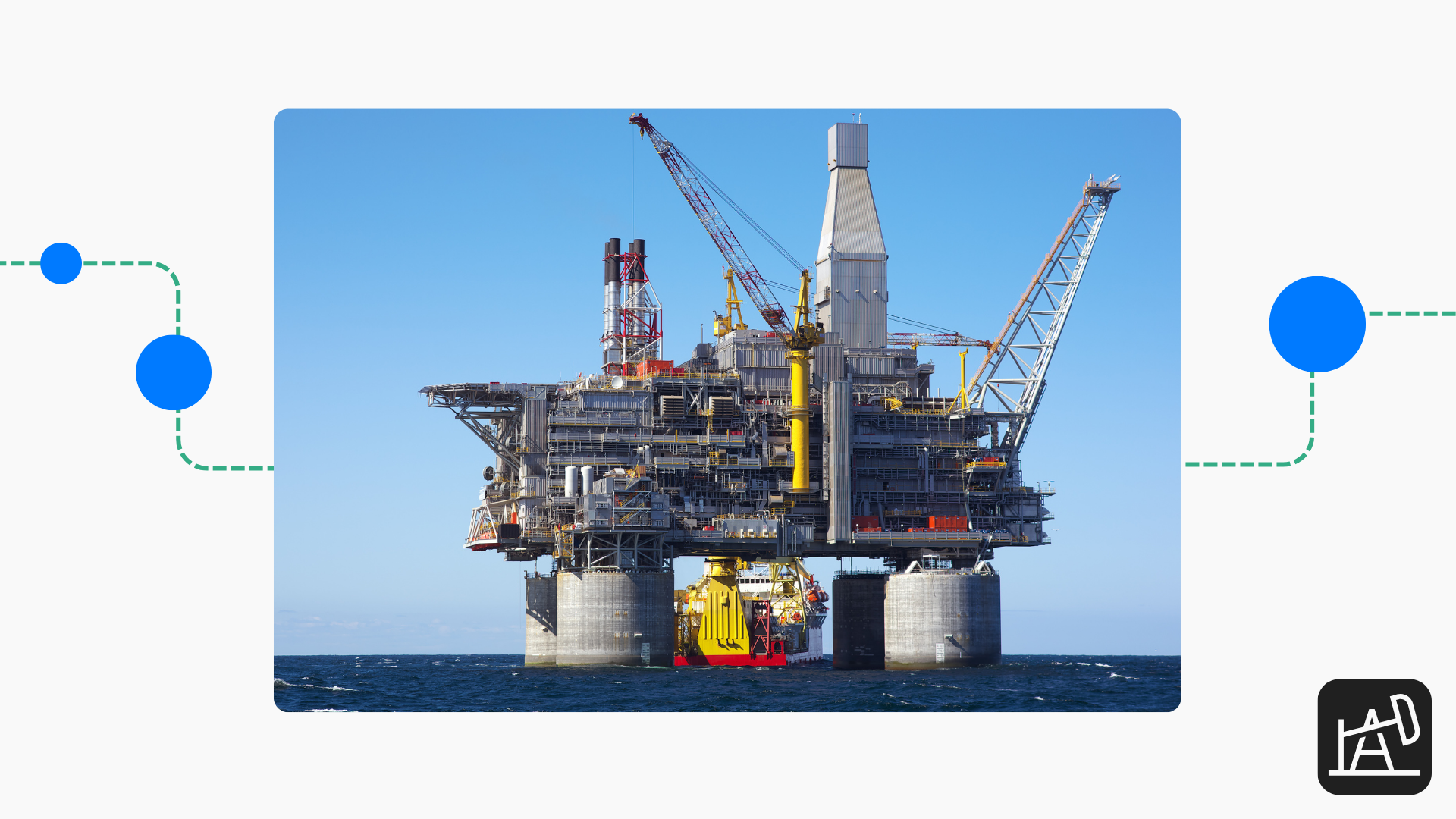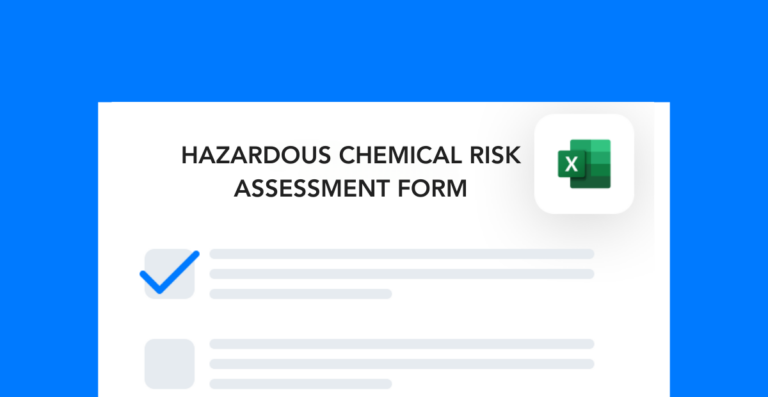Working on an oil rig comes with a variety of health and safety challenges. And as a manager, it’s easy to get overwhelmed when incidents happen. But there are so many corrective and preventive strategies you can put in place to make it easier. Here are some helpful tips for managing oil rig worker accidents and preventing them in the future.
Free form!
Download this hazardous chemical risk assessment Excel form to identify and reduce rig safety hazards.
Common types of oil rig accidents
On a rig, there are lots of equipment components and potentially hazardous materials. And you must consider all these factors when creating an effective safety program. Your emergency response plan should account for all different types of oil rig worker accidents, including:
- Fires and explosions
- Equipment failures
- Human error (behavioral safety)
- Weather-related incidents
- Rig structural issues
- Chemical releases
Because oil rigs operate in remote areas, getting help from emergency responders is not always an option. It should never be your first line of defense. If you plan well for these incidents and have the right equipment on your rig, you should be able to respond effectively.
Oil rig accident worker response measures
When an oil rig accident happens, your priority is to get everyone to safety. How you respond will depend on whether it’s an isolated incident or one that affects the whole operation.
In the case of a total rig accident, your central alarm system is critical equipment for ensuring an effective evacuation of the rig. You’ll also want to have plenty of first aid kits and fire extinguishers available. Active fires or continuous explosions are the worst-case scenario. And that’s because if you’re on an offshore rig, there’s no place for the fire to go. And you won’t get local fire departments arriving on the scene in minutes.
If an incident is isolated to just one area of the rig, your priority is to administer first aid to anyone who’s injured. Once they’re stable you can begin documenting everything (taking photos, starting the injury report, etc.).
Corrective and preventive actions
Once the aftermath of the oil rig accident has cleared, you need to go back and address the issues that caused it. You should always start with corrective actions, which are designed to fix any immediate safety concerns.
Some examples of corrective actions for rig accidents include:
- Blocking off dangerous equipment
- Shutting down an unsafe process
- Fixing broken equipment or tools
- Removing a hazard from a work area
Note that corrective actions often don’t solve the problem in the long-term. If you want to avoid future oil rig worker accidents, you need to ask yourself: “What are the conditions that created this problem in the first place?”
Here are some examples of preventive actions you might take:
- Introduce new training or update existing training
- Implement a new practice drill system for various accident scenarios
- Update or overhaul your preventative maintenance program
- Increase the frequency or quality of equipment inspections
- Create new PPE requirements for different jobs on the rig
Detailed incident reports for oil rig worker accidents
Regardless of what type of accident you’re dealing with, it’s important to compile a comprehensive report. Your report should include information about what happened, who or what it affected, and how you addressed the root causes.
If you’re doing this with EHS software, then your records should automatically update once new information is added to the investigation. But if you’re documenting everything manually, make sure your team communicates regularly so you get all the details down.
Documenting oil rig worker accidents is an essential practice if you want to learn from the past. Your rig will be safer and more efficient if you can implement preventive measures that tackle the issues you’ve dealt with before.




